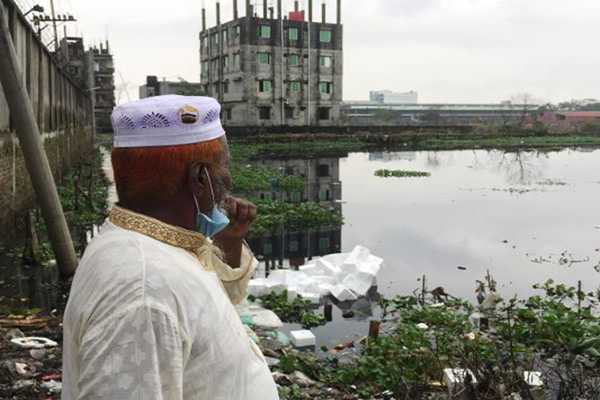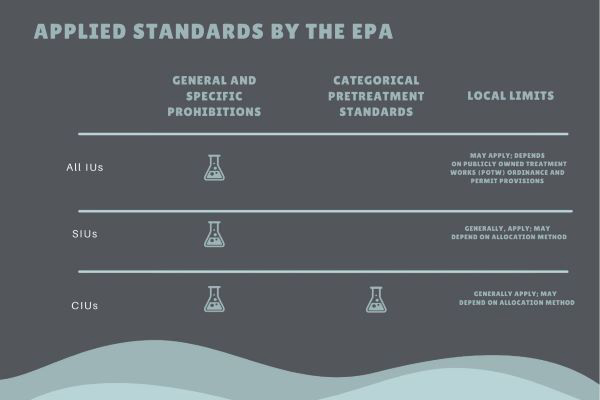Let’s Keep Metal in Music, Not in Our Water!
The words “heavy metal” can create different images for people. Some people will automatically think of the many famous, and now classic, metal bands that started the genre in the late 1960s - like Led Zeppelin or Black Sabbath. Other people will think about what the bands looked like or remember what the fans looked like when they went to concerts. To me, many pictures of classic metalheads remind me of our favorite time-traveling duo, Bill and Ted.
In 2021, heavy metal has spread its branches across the globe to now include bands like Babymetal, a youth Japanese metal band, whose fans resemble a rocker version of your American Girl doll.

Babymetal, a Japanese Metal Band; Source: Leon Neal, Loudwire
Regardless of the type of heavy metal music that you listen to, or however, you decide to express yourself in fashion, it is unanimous that this sub-culture inspires a BOLD sense of fashion. This bold sense of fashion requires companies to design, manufacture, and distribute all of these bright, or not so brightly colored clothes across the globe!
Many fast fashion stores like H&M and Forever 21 are where many of the new alternative youth are purchasing their clothing. Fast fashion stores, like the ones listed above, commonly use mass industrial manufacturing to supply the demand for this alternative scene. These companies are also more likely to source raw materials and manufacturing processes outside of the United States.
This brings us to the other type of heavy metals in this world -- the elemental type.
Heavy metals are naturally occurring compounds that can be found in small quantities in many places throughout our ecosystem and, normally, they do not cause harm. Yet, through human activity, we introduce these compounds in large quantities. Large enough quantities to not only cause harm to the environment, but also to human health. Since heavy metals do not degrade, this harm occurs due to the gradual accumulation of these compounds in the food chain, known as bioaccumulation.
Several industries either directly use heavy metals as materials in their manufacturing processes like textiles, microelectronics, and plastics. While other industries have heavy metals as just a byproduct within their manufacturing process, like coal-burning.
The textile industry utilizes heavy metals in the colorful dyes used to treat the fabric. Many heavy metals are used in the dyes to get the variety and brightness of colors for fabrics, hence color names like Cobalt Blue. Although some metals, like Chromium, Copper, and Zinc can also be harmful to human health and our ecosystem[5], some of these metals are also vital to human health.
Earlier this year in September of 2020, CNN published an article titled “Asian rivers are turning black. And our colorful closets are to blame”[2]. A black river sounds pretty “metal”, although in real life the rivers are filled with actual metals and other toxic chemicals that are polluted into the water supply. In the CNN article, it brought light to many issues within the textile manufacturing industry in Bangladesh, with an emphasis on their waste management practices and how fabric dyes are contributing to the wastewater problem.
Bangladesh is currently the world’s third-largest garment manufacturer, after China and the European Union, which totaled $34 Billion of exported clothing in 2019 according to the World Trade Statistical Review[1]. The fashion industry alone produces 20% of the global wastewater[2] and in countries like Bangladesh, governments are working quickly to renew environmental standards to prevent the pollution of their environment.
The Minister of Bangladesh provided CNN with an e-mailed statement for their article. The email stated, “…a range of measures were being taken to address pollution, including updating conservation and environmental laws, imposing fines on polluters, monitoring water quality, setting up centralized treatment plants, and working with international development partners to improve wastewater treatment.”[3]

Civilian overlooking a polluted canal in Bangladesh; Source: Rakib Hasan, CNN
The pollution from textile mills and other industrial manufacturing sites located in Bangladesh has ravaged the surrounding communities and the pollution has affected all forms of life -- humans, animals, and plants alike. Although there seems to be some change coming from Bangladesh, there is still progress to be made in the textile manufacturing world.
The textile industry around the world has varying regulations depending on the country or territory that you are in, including the United States.
The United States Environmental Protection Agency (EPA)’s current list of toxic substances dates back to 1976, where a list of pollutants was identified in a settlement during the NRDC et al. vs Train, sometimes called the “Toxics Consent Decree” or the “Flannery Decision”[6]. This later was an amendment to the Clean Water Act in 1977[6].
A couple of years later in 1987, Congress revised section 303(c) (2) of the Clean Water Act which required states to implement numerical criteria for all the toxic pollutants listed in section 307(a) (1). By 1992, the remaining 14 states that did not implement their own numerical limits for these pollutants had to abide by limits now set by the EPA. In 1992 the EPA created the National Toxics Rule (NTR) that set federal numeric limits for those states who had not complied with the Clean Water Act in a reasonable time frame.
The EPA under the NTR limits Zinc to under 10,000 ug/L, Copper to under 1,000 ug/L, Chromium to under 100 ug/L, and that is to just reference a few[5].
These limits are enforced by the National Pretreatment Program and the Effluent Limitations Guidelines and Standards. While other industries have additional regulations from the National Pollutant Discharge Elimination System (NPDES).
The National Pretreatment Program helps enforce the pollutant discharge limits and identify which type of industrial facilities have to abide by these standards.
These standards and limits, either substantive or procedural, for these pollutants apply to all industrial users (IUs). As per the EPA, the pretreatment program requirements are enforced by three types of pretreatment standards.[4]
- General and specific prohibitions
- Categorical pretreatment standards
- Local limits
Any of these standards can be upheld by the federal EPA, state, and local governing bodies regardless of which body created the laws or regulations.

Table 1: Industrial users (IU), significant industrial users (SIU), and categorical industrial users (CIU) applied standards by the EPA.[4]
Wastewater from industrial manufacturing, even a single textile mill, can be responsible for hundreds of gallons of wastewater in a day. Continuous sample monitoring of this waste is done to ensure that the waste is within the compliance limits of these substances. If waste exceeds these limitations, fines may occur.
These manufacturing sites monitor their waste streams in a variety of ways. Instruments like titration equipment, benchtop lab meters, and other analytical equipment are used to monitor these levels in the lab.
Some manufacturing sites use pre-treatment methods, which are used to remove the substances to legal limits before they dispose of the wastewater. It is imperative to get accurate results because if the levels are higher or lower than permitted, manufacturing plants can potentially over or under treat their water. This could potentially lead to wasted resources on pre-treatment chemicals, or again, being subject to fines and charges from federal, state, and local governments.
Many of these monitoring methods, like titration, are still common in industrial laboratory settings. Doing titrations by hand can introduce many possibilities for the introduction of human error. You can read all about the advantages of automated titration over manual in our Automated Titration vs. Manual Titration blog.
YSI has a variety of laboratory products that can help assist in the monitoring of industrial wastewater which includes our YSI Automated Titration product line.

We have several application notes for your reference below that provide details on how to measure Zinc, Nickel, Lanthanum, and Magnesium with titration. These application notes can also be utilized with our Senior Applications Specialist here at YSI to assist you in setting up analysis for other metals of concern.
If you want to learn more about YSI titration you can reach out to a knowledgeable representative by filling out a request form or check out our portfolio!
Relevant Application Notes:
Additional Blog Posts of Interest
Which is Better – Manual or Automated Titrations?
How to Determine Water Levels in Biodiesel?
-
-
-
-
-
-
-
-